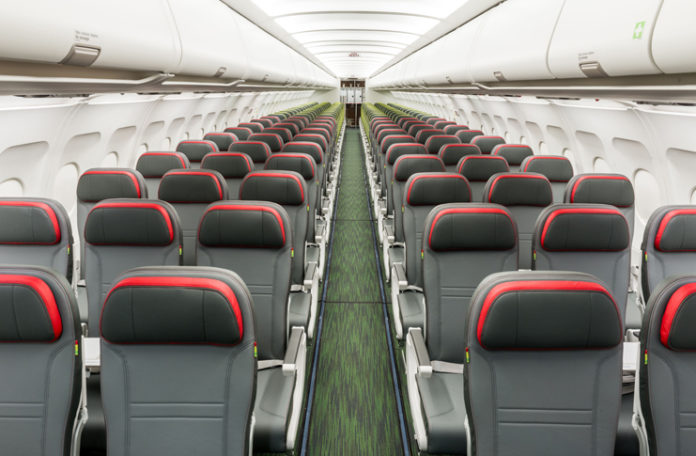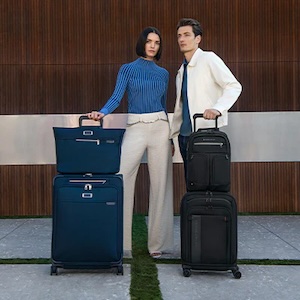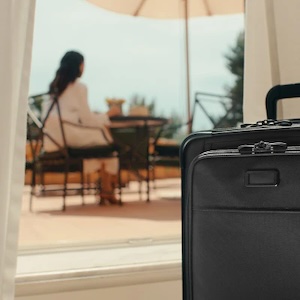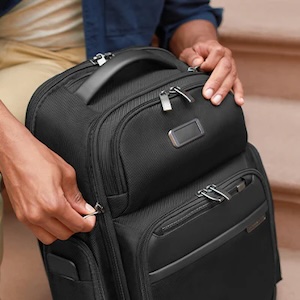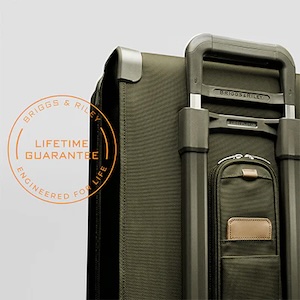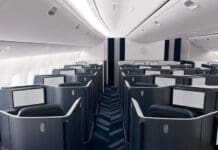TravelingForMiles.com may receive commission from card issuers. Some or all of the card offers that appear on TravelingForMiles.com are from advertisers and may impact how and where card products appear on the site. TravelingForMiles.com does not include all card companies or all available card offers.
Some links to products and travel providers on this website will earn Traveling For Miles a commission that helps contribute to the running of the site. Traveling For Miles has partnered with CardRatings for our coverage of credit card products. Traveling For Miles and CardRatings may receive a commission from card issuers. Opinions, reviews, analyses & recommendations are the author’s alone and have not been reviewed, endorsed, or approved by any of these entities. Terms apply to all credit card welcome offers, earning rates and benefits and some credit card benefits will require enrollment. For more details please see the disclosures found at the bottom of every page.
In the wake of the recent serious incident on an Alaska Airlines Boeing 737 MAX 9 where a deactivated exit door blew out leaving behind a gaping hole in the fuselage and a cabin that depresuried in seconds, this is a quick reminder that it’s almost always a good idea to keep your seat belt fastened, even when the fasten seat belt light is out.
Seat belts probably saved the day on Alaska Airlines 1282
If you have read the reports from some of the passengers who were unfortunate enough to be on the Alaska Airlines Boeing 737 MAX 9 that self-ventilated shortly after take-off, you’ll know that a child seated near the door-plug that blew out had their shirt ripped off their body (as the aircraft cabin depressurized) and watched as that shirt disappeared through the hole in the aircraft hull.
Had this incident not happened close enough to take off for the seat belt signs to still be on, there’s a chance that this child would not have been wearing their seat belt and that they would have joined their shirt in exiting the aircraft prematurely.
Dealing with ‘what if’ situations like this isn’t particularly scientific (who knows what may or may not have happened), but it’s probably safe to say that there’s a good chance that it was the seat belts onboard Alaska Airlines 1282 that prevented any fatalities as a result of this latest MAX incident.
Fortunately, however, incidents where an aircraft has depressurized thanks to a significant breach in its hull is a rare occurrence, so the risk of being sucked out of an aircraft isn’t why I suggest that passengers should always keep their seat belts fastened when in flight. It’s the risk of something else – Clear-air Turbulence – that makes the wearing of seat belts important.
Clear-air turbulence
Anyone who has taken more than a few flights in their life will have probably experienced some kind of turbulence where the aircraft feels like it’s being buffeted around by an unseen force, where the whole cabin shakes, and where passengers have their drinks deposited in their laps.
That’s ‘normal’ turbulence, and while it’s not a pleasant experience for most people, it’s also something that passengers are usually prepared for because the flight crew have issued a warning and the fasten seat belt lights have been switched on.
Clear-air turbulence (CAT) is something different.
Wikipedia has this to say about CAT:
“In meteorology, clear-air turbulence (CAT) is the turbulent movement of air masses in the absence of any visual clues, such as clouds, and is caused when bodies of air moving at widely different speeds meet.
The atmospheric region most susceptible to CAT is the high troposphere at altitudes of around 7,000–12,000 metres (23,000–39,000 ft) as it meets the tropopause. Here CAT is most frequently encountered in the regions of jet streams. At lower altitudes it may also occur near mountain ranges. Thin cirrus clouds can also indicate high probability of CAT.
CAT can be hazardous to the comfort, and occasionally the safety, of air travelers.”
What that definition doesn’t mention, however, is something that you’ll find on the Airbus safety website.
- CAT is categorized as “severe turbulence”.
2. This kind of turbulence cannot be detected by an aircraft’s systems.
Per Airbus:
“The on-board weather radar cannot detect CAT as it does not contain water droplets. Using the weather forecast is the main method to predict when CAT may be encountered during a flight. Flight crews may also be informed of the potential to encounter CAT from pilot reports sent from aircraft that have previously flown through the affected areas to ATC and to the Operators’ operations control centre.”
Clear-air turbulence can be considerably more violent that the turbulence that we encounter on a lot of regular flights and it’s something that can ‘hit’ an aircraft suddenly and without any warning.
This is the kind of turbulence that can result an aircraft move violently in one direction or another in a matter of seconds and as a result, it’s the kind of turbulence that can lead to passengers being thrown around the cabin and can lead to serious injuries.
A seat belt can prevent serious injuries
With CAT being as unpredictable as it is and with an aircraft’s systems not being able to detect the presence of CAT, there’s a good chance that the passengers on an aircraft encountering CAT will not have much (if any) advance warning.
The crew may not have time to switch on the fasten seat belt signs before the aircraft gets caught up in the two different air currents that lead to clear-air turbulence, so it will be passengers who already have their seat belts on who will be less likely to get injured.
Sure, wearing seat belt isn’t going to provide much protection if loose objects start flying around the cabin (even something as small as an iPhone can cause a nasty injury when it’s traveling at speed), but a passenger wearing a seatbelt won’t be launched into the ceiling when an aircraft hits clear-air turbulence, while a passenger without a seat belt is at risk of making the nightly news.
Here are a few reports from 2023 that will show you what severe turbulence can be like:
- 4 People Injured as ‘Severe Turbulence’ Rocks Flight to Florida
- Severe turbulence on Emirates flight injures 14 passengers
- 11 Atlanta-bound passengers hospitalized after turbulence
In each of these reports you’ll read of passengers or crew ‘hitting the ceiling’ as the aircraft hit unexpected turbulence, and that’s not something that should be physically possible if a seat belt is being worn.
One time not to wear a seat belt
If an aircraft is being fuelled while passengers are still boarding, you’ll notice that the seat belt lights will be switched off and as keen as you may be to get ready for your flight, you should not have your seat belt fastened.
If an incident was to occur during the fuelling process, a speedy evacuation will not be helped by passengers (some of whom may be panicking) having to fiddle with seat belts before they make their way to the exits, so this is one time where keeping your seat belt unfastened is the correct course of action.
Bottom line
Unless you’re on the ground and your aircraft is being refuelled, wear you seat belt even when the seat belt light has been switched off.
You don’t have to have it done up tightly across your waist all the time – you can loosen it for a bit more comfort – but by wearing a seat belt throughout a flight you reduce the chances of being injured (or worse) should the aircraft encounter unexpected turbulence or, if it’s made by Boeing, if it unexpectedly develops an extra hole in the fuselage.

